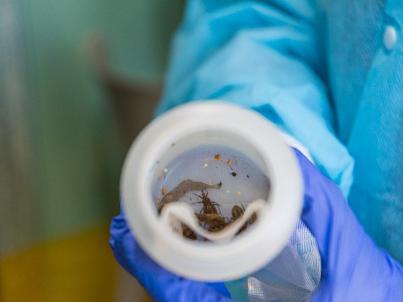‘Asexual’ chagas parasite found to sexually reproduce
Published: 5 September 2019
‘Asexual’ chagas parasite found to sexually reproduce
Trypanosoma cruzi is the parasite responsible for Chagas Disease, found in Latin America. Around eight million people are currently infected by the disease, which can cause irreversible damage to the heart and digestive tract. Chagas disease is mostly spread by insects known as Triatominae, or "kissing bugs", but can also be transmitted by food contaminated with T. cruzi. While some medication can cure patients if given early enough, once the disease is established it is less effective.
In new research, led by Phillip Schwabl and Dr Martin Llwellyn of The Institute of Biodiversity, Animal Health and Comparative Medicine and published today in Nature Communications, scientists have sequenced the whole genome of the single-celled parasite Trypanosoma cruzi and resolved 30 years of heated debate to show that it can indeed be sexually active.
Lead author of the research, Philipp Schwabl from the University of Glasgow, said: “There has been a lot of argument among scientists about whether T. cruzi is sexual or not. It turns out people weren’t looking in the right places.We sampled and analysed, in unprecedented detail, the parasites found in a small geographic area in Ecuador. Remarkably, we discovered that some groups of parasites can be highly sexual. However, it also seems other groups of parasites from very nearby sites can behave very differently – seemingly completely abstinent. At the moment, we have no idea why”
Dr Martin Llewellyn, UK senior scientist on this study said: “Through analysing the genetic code we now know that these parasites do have sex, however we still can’t pinpoint the exact stage of their life that this happens in. Our hypothesis is that this is happening when the parasites are inside the insect that spreads Chagas Disease. Confirming that is the next step.”
The study, ‘Meiotic sex in Chagas disease parasite Trypanosoma cruzi’ is published in Nature Communications.
Read the full story: https://www.gla.ac.uk/news/headline_669767_en.html
First published: 5 September 2019

Image courtesy of Esteban Baus

